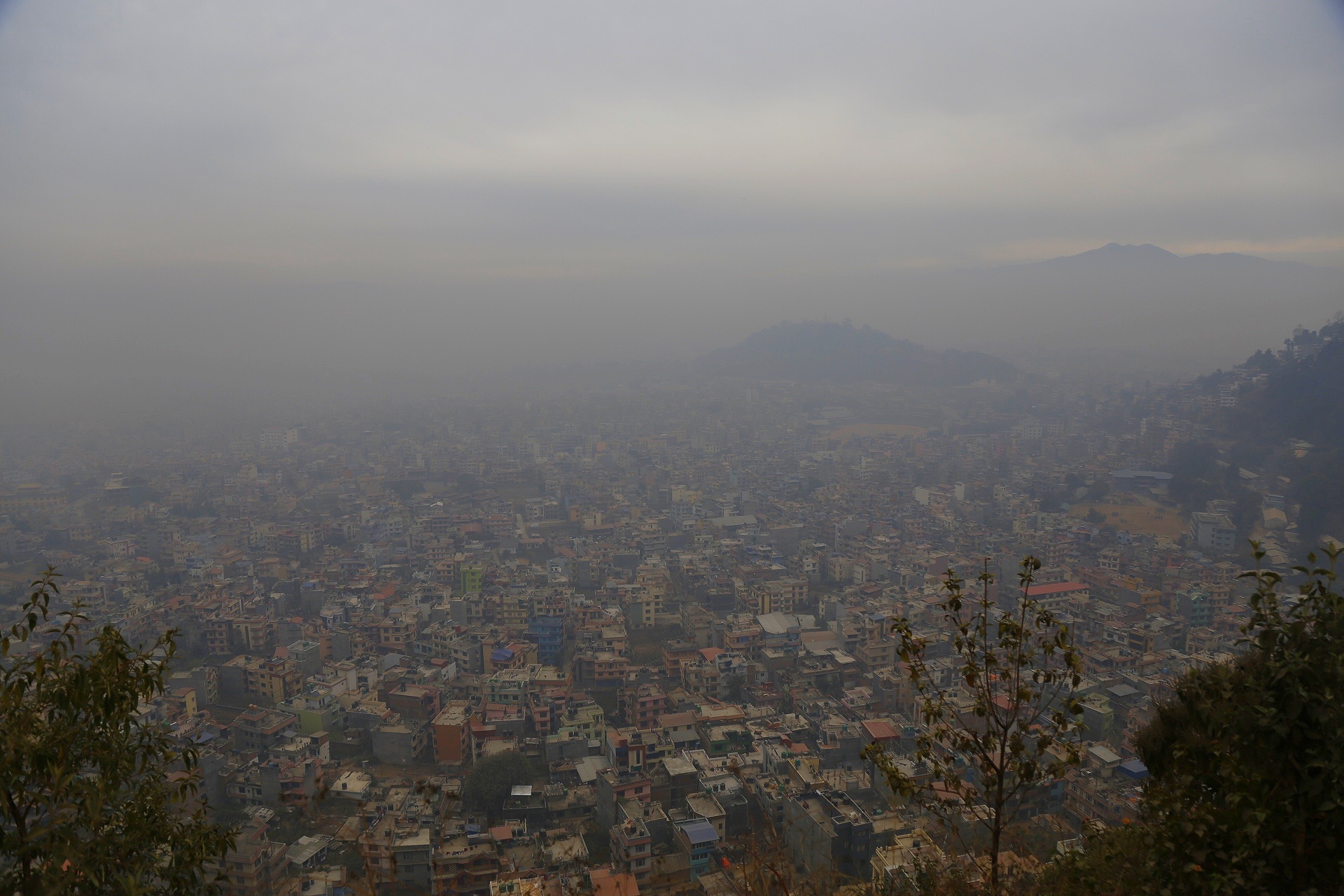Wildfire-Induced Air Quality Crisis: A Report on Environmental and Public Health Impacts in North America
Introduction
A significant environmental event is currently unfolding across North America, as smoke from extensive Canadian wildfires has drifted into the United States, triggering widespread air quality alerts. This report analyzes the situation, with a significant emphasis on its direct implications for several United Nations Sustainable Development Goals (SDGs), particularly those concerning health, climate action, and sustainable communities.
Event Analysis and Geographic Scope
Source and Scale of Wildfires
The primary source of the air pollution is a series of uncontrolled wildfires in Canada. The crisis is of a substantial scale, directly impacting SDG 15 (Life on Land) through massive deforestation and ecosystem loss.
- Nearly 200 wildfires are reported as out of control in Canada.
- Key affected provinces include Saskatchewan (81 fires), Manitoba (159 fires), and Ontario (61 fires).
- Over 16.5 million acres of forest have been burned in Canada this year, marking it as a potentially record-setting season for wildfire destruction.
- In the United States, separate fires, such as the Gifford Fire in California’s Los Padres National Forest, have burned over 65,000 acres, further contributing to regional air quality issues and habitat loss.
Atmospheric Conditions and Affected Regions
A high-pressure weather system over the Midwest is exacerbating the situation by trapping smoke near the ground, prolonging the public health threat. Air quality alerts have been issued for millions of people across the Upper Midwest and the Northeast, affecting the sustainability and safety of numerous communities (SDG 11).
- Affected States: Minnesota, Wisconsin, Michigan, Indiana, Pennsylvania, New York, New Jersey, Connecticut, Massachusetts, Vermont, Rhode Island, New Hampshire, Delaware, and Maine.
- Affected Cities: Major metropolitan areas including Milwaukee, Detroit, Buffalo, Albany, Boston, and New York City are experiencing poor air quality.
- Air Quality Index (AQI): Readings across 14 states range from “moderate” to “unhealthy for the general public.”
Implications for Sustainable Development Goals (SDGs)
SDG 3: Good Health and Well-being
The most immediate and critical impact of the wildfire smoke is on public health. The event undermines progress toward ensuring healthy lives and promoting well-being for all ages.
- Pollutant Type: The smoke contains fine particulate matter (PM2.5), which is small enough to penetrate deep into the lungs.
- Health Risks: Exposure can exacerbate or increase the risk of asthma, lung cancer, and other chronic lung diseases. It can also cause inflammation and weaken the immune system.
- Vulnerable Populations: Infants, children, seniors, and pregnant women are identified as being especially vulnerable to the adverse health effects of poor air quality. Public health advisories urge these groups, and the general public in heavily affected areas, to remain indoors.
SDG 13: Climate Action
This event serves as a stark illustration of the consequences of climate change. The increased frequency and intensity of wildfires are directly linked to global warming, highlighting the urgent need for comprehensive climate action.
- Causality: Scientific studies confirm that warmer global temperatures contribute to drier conditions in forests and vegetation.
- Vicious Cycle: This dryness increases the likelihood of wildfires igniting and spreading rapidly, creating a feedback loop that further degrades natural carbon sinks and releases massive amounts of carbon into the atmosphere.
SDG 11: Sustainable Cities and Communities
The air quality crisis directly challenges the goal of making cities and human settlements inclusive, safe, resilient, and sustainable. The pervasive smoke renders urban environments unsafe, particularly for outdoor activities, and strains public health resources.
- The alerts in major cities like New York City and Boston demonstrate the vulnerability of dense urban populations to transboundary environmental crises.
- The event underscores the need for cities to develop and implement robust emergency response plans for climate-related disasters, including air quality emergencies.
Conclusion
The ongoing air quality crisis caused by Canadian wildfires is not an isolated incident but a complex environmental and public health emergency with clear links to the Sustainable Development Goals. It highlights the interconnectedness of climate change (SDG 13), terrestrial ecosystem health (SDG 15), urban sustainability (SDG 11), and public health (SDG 3). Addressing this challenge requires immediate public health interventions as well as long-term, coordinated action on climate change mitigation and forest management to prevent future occurrences of this magnitude.
SDGs Addressed in the Article
-
SDG 3: Good Health and Well-being
The article extensively discusses the health impacts of wildfire smoke, linking air pollution to respiratory illnesses, weakened immune systems, and increased risks for vulnerable populations like infants, children, seniors, and pregnant women. This directly connects to ensuring healthy lives and promoting well-being.
-
SDG 11: Sustainable Cities and Communities
The article highlights that millions of people in cities across the Upper Midwest and Northeast are under air quality alerts. It names specific cities like Milwaukee, Detroit, and New York City, focusing on the adverse environmental impact on urban populations, which is a core concern of SDG 11.
-
SDG 13: Climate Action
The article explicitly states, “Studies have shown that climate change is fueling conditions for more frequent and intense wildfires.” By identifying climate change as a root cause of the increased severity of wildfires, the article directly addresses the urgent need for climate action.
-
SDG 15: Life on Land
The text reports that “more than 16.5 million acres have been scorched so far this year” in Canada and mentions another fire scorching “more than 65,000 acres” in California. This massive loss of forest ecosystems is a direct threat to terrestrial ecosystems, which SDG 15 aims to protect and restore.
Specific SDG Targets Identified
-
Target 3.9: Substantially reduce the number of deaths and illnesses from hazardous chemicals and air, water and soil pollution and contamination.
The article’s focus on the dangers of wildfire smoke, which contains small particles (PM2.5) that can cause or exacerbate “asthma, lung cancer and other chronic lung diseases,” directly relates to reducing illnesses from air pollution.
-
Target 11.6: Reduce the adverse per capita environmental impact of cities, including by paying special attention to air quality.
The issuance of air quality alerts for major cities and the description of the air quality index as “unhealthy” for the general public in urban areas directly corresponds to this target’s focus on urban air quality.
-
Target 13.1: Strengthen resilience and adaptive capacity to climate-related hazards and natural disasters in all countries.
The article describes wildfires as a climate-related hazard that is becoming “more frequent and intense.” The public health advisories to “remain indoors” are a form of adaptive response to this hazard, aligning with the goal of strengthening resilience.
-
Target 15.1: Ensure the conservation, restoration and sustainable use of terrestrial and inland freshwater ecosystems and their services, in particular forests.
The article’s quantification of the vast forest area burned (“more than 16.5 million acres”) highlights a significant failure in the conservation of forest ecosystems, making this target highly relevant.
Indicators Mentioned or Implied
-
Indicator 11.6.2: Annual mean levels of fine particulate matter (e.g. PM2.5 and PM10) in cities.
The article explicitly mentions the pollutant of concern: “small particles that are less than 2.5 micrometers in diameter” (PM2.5). It also refers to the “air quality index” in 14 states and numerous cities ranging from “moderate” to “unhealthy,” which is a direct measurement related to this indicator.
-
Indicator 15.1.1: Forest area as a proportion of total land area.
The article provides a direct quantitative measure of forest loss: “more than 16.5 million acres have been scorched so far this year.” This figure serves as a direct input for tracking changes in forest area, which is the basis of this indicator.
-
Implied Indicator for Target 3.9: Morbidity attributed to ambient air pollution.
While the article does not provide statistics on the number of people who have fallen ill, it clearly implies this can be measured by stating that exposure to the smoke can “exacerbate or increase the risk of asthma, lung cancer and other chronic lung diseases.” The number of hospitalizations or doctor visits for these conditions during smoke events would be a relevant metric.
SDGs, Targets, and Indicators Analysis
| SDGs | Targets | Indicators |
|---|---|---|
| SDG 3: Good Health and Well-being | Target 3.9: Substantially reduce the number of deaths and illnesses from hazardous chemicals and air, water and soil pollution and contamination. | Health Risks: Mention of increased risk for “asthma, lung cancer and other chronic lung diseases” due to air pollution. |
| SDG 11: Sustainable Cities and Communities | Target 11.6: Reduce the adverse per capita environmental impact of cities, including by paying special attention to air quality. | Indicator 11.6.2 (implied): The “air quality index” in cities is reported as “moderate” to “unhealthy,” and the specific pollutant “particles that are less than 2.5 micrometers in diameter” (PM2.5) is identified. |
| SDG 13: Climate Action | Target 13.1: Strengthen resilience and adaptive capacity to climate-related hazards and natural disasters in all countries. | Climate Link: The article states that “climate change is fueling conditions for more frequent and intense wildfires.” Public health advisories are mentioned as an adaptive measure. |
| SDG 15: Life on Land | Target 15.1: Ensure the conservation, restoration and sustainable use of terrestrial and inland freshwater ecosystems and their services, in particular forests. | Indicator 15.1.1 (implied): A direct measure of forest area loss is provided: “more than 16.5 million acres have been scorched so far this year.” |
Source: nbcnews.com







